Another Christmas escape. This time to Kuala Lumpur. Discovered Air Asia had some promo flights to KL from Manila. There was no plan to visit any particular spot beside the famous Petronas towers. It turned out to be more of a shopping trip with a few city sightseeing. Visa free stay granted for Filipinos up to 30 days and EU citizens up to 90 days.
- 2 passengers charge 13760.00
- International Passenger Service Charge 1100.00 PHP
- klia2 fee 90.00 PH
- Passenger Service Charge 790.00 PHP
- GST 47.40 PHP
- Subtotal 15787.40 PHP
Add-ons & Fees
- 2x Processing Fee 800.00 PHP
- 2x Checked baggage 20kg 1698.00 PHP
- 1x Philippines travel tax 1620.00 PHP
- Subtotal 4118.00 PHP

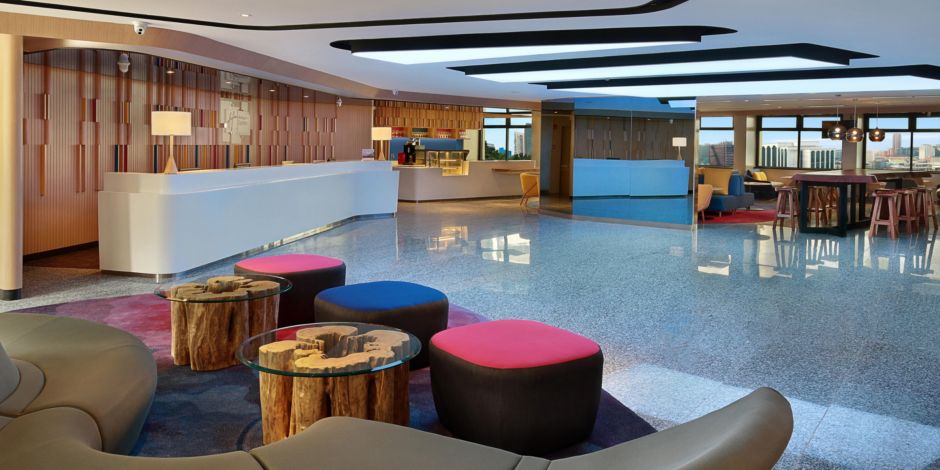
As soon as we got to the room, time for a shower and relax for a while with a cup of coffee and some left over sandwiches we bought in the airport on arrival. (we didn't include food on the plane booking, budget travellers remember!)
Time to explore the city, it's already late afternoon and the street market in the back of the hotel starts to open up. Let's walk towards the Petronas Twin Towers.
History of KL
The origin of Kuala Lumpur dates to 1857, when a group of 87 Chinese tin miners founded a settlement at what is now the suburb of Ampang. Strategically commanding both river valleys, the community flourished as a tin-collecting centre despite its malaria-infested jungle location. In 1880 Kuala Lumpur superseded Klang (now Kelang) as the state capital, and its rapid growth thereafter has been attributed to Sir Frank Swettenham, British resident after 1882. He initiated construction on the Klang–Kuala Lumpur Railway and encouraged the use of brick and tile in buildings as a precaution against fire and as an aid to better health. The city’s central position led to its choice as capital of the Federated Malay States (1895).
The city was occupied by the Japanese (1942–45) in World War II. Its population greatly increased in the postwar years during a long (1948–60) communist-led guerrilla insurgency, and under a resettlement program new villages were established on the city’s outskirts. Kuala Lumpur became the capital of the independent Federation of Malaya in 1957 and of Malaysia in 1963. Growth continued, spurred by industrial development; the population reached a half million in the mid-1960s and passed one million in the early 1980s. Population growth brought increased congestion, however, which, with Malaysian government offices scattered across the city, hampered administration. Consequently, many of the federal offices were moved to the new city of Putrajaya, about 15 miles (25 km) south of Kuala Lumpur, about the turn of the 21st century. Putrajaya subsequently became the country’s administrative centre, while Kuala Lumpur remained the capital.
The Contemporary City
The city comprises a mixture of modern and traditional architecture; such structures as glass-and-concrete skyscrapers, elegant mosques, Chinese shop-houses (family-operated shops with the business on the ground floor and the family’s living space upstairs), squatters’ huts, and Malay stilt kampungs (“villages”) betray Western, Middle Eastern, East Asian, and local influences. While its centre along the embanked Kelang is heavily congested, its municipal area and suburbs are well planned. The commercial quarter, called the Golden Triangle, is concentrated on the river’s east side. Among its sleek high-rise buildings are two of the world’s tallest buildings: the 1,483-foot (452-metre) Petronas Twin Towers, designed by Argentine-American architect Cesar Pelli; and one of the tallest broadcasting and telecommunications masts, the 1,381-foot (421-metre) Kuala Lumpur Tower. Government buildings and the notable railway station (all influenced by Moorish design) are on the river’s hilly west bank. This nucleus is surrounded by a zone of Chinese two-story wooden shop-houses and mixed residential areas of Malay kampungs, modern bungalows, and middle-income brick flats. The exclusive Bukit Tunku (or Kenny Hills) sector is a showcase for upscale dwellings and other structures that blend multiple architectural styles.
Malays, who are Muslim, are the city’s largest ethnic group. Despite the prevalence of domes and minarets associated with Islamic architecture, however, the non-Muslim Chinese dominate the city and its economy. The mostly Hindu Indian minority, connected historically with nearby rubber estates, also is substantial. Many Malays are employed in government service, and Kampung Baru is one of the city’s few concentrated Malay residential sections.
The industrial suburb of Sungai Besi (“Iron River”) has iron foundries and engineering works and factories that process food and soap. The Sentul and Ipoh Road area is the site of railway (assembly and construction) and engineering workshops and sawmills, and cement is manufactured at Rawang to the north. While Kuala Lumpur has diversified manufacturing, the focus of industrial planning is in the adjacent suburbs of Petaling Jaya and Batu Tiga, notably in the high-technology sector. Kuala Lumpur is the country’s centre of banking and finance; activities related to these and other services, including tourism, have become increasingly important. The local Batu Arang coalfield and the Connaught Bridge thermal electric power station near Kelang are the main sources, respectively, of the city’s fuel supply and power.
Kuala Lumpur, with its central position in Peninsular Malaysia, is the hub of the peninsula’s transportation system, and rail lines and major roads radiate from it. Air service is largely through Kuala Lumpur International Airport, located about 30 miles (50 km) south at Sepang. The city itself has an extensive network of multilane roads and express highways, although these are inadequate for the growing number of cars and trucks. A light-rail public transit system—inaugurated in 1996 and now consisting of three interconnected lines—has eased traffic congestion somewhat.
There are several hospitals and state clinics, including a modern tuberculosis centre and the well-equipped Institute of Medical Research (1900). The Rubber Research Institute (1925) and Radio and Television Malaysia are headquartered there. The University of Malaya was founded at Kuala Lumpur in 1962. Tunku Abdul Rahman College was established there in 1969, followed by the International Islamic University Malaysia in 1983. In addition, the Malay-language National University of Malaysia opened in Kuala Lumpur in 1970; the main campus is now in nearby Bangi, but there is still a branch in the city.
Lake Gardens, extending westward from the Kelang River opposite the central city, is an extensive greenbelt containing orchid and other gardens, wildlife areas, the government’s Parliament House, the National Museum of Malaysia (1963), the Islamic Arts Museum Malaysia (1999), and the National Planetarium (1993). A smaller natural area, Bukit Nanas (“Pineapple Hill”) Forest Reserve, is just northwest of the Golden Triangle. Nearby are the National Art Gallery (1958), the National Library of Malaysia (1966), and the National Theatre. Notable civic buildings include the Moorish-style Sultan Abdul Samad Building (formerly the Secretariat Building), the more contemporary National Mosque (Masjid Negara), and the old Sultan’s Mosque (Masjid Jame), which is on a peninsula at the junction of the Kelang and Gombak rivers in the city centre. Just south of the city is the National Sports Complex, constructed for the 1998 Commonwealth Games; among its several sports venues is the 100,000-seat National Stadium. A short distance to the east is the National Zoo and Aquarium. At the northern edge of the federal territory is Batu (“Rock”) Caves, a complex of limestone grottoes including a 400-foot- (122-metre-) high outcropping reached by hundreds of steps that contains a Hindu temple and is the scene of an elaborate festival, Thaipusam, in honour of the Hindu deity Subramaniam (or Skanda). A short distance north of the caves is Templer Park, a jungle preserve.
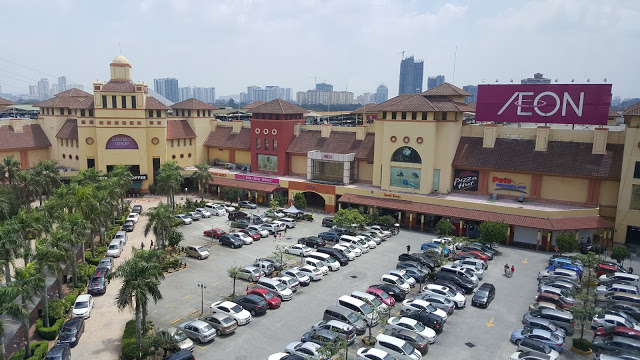
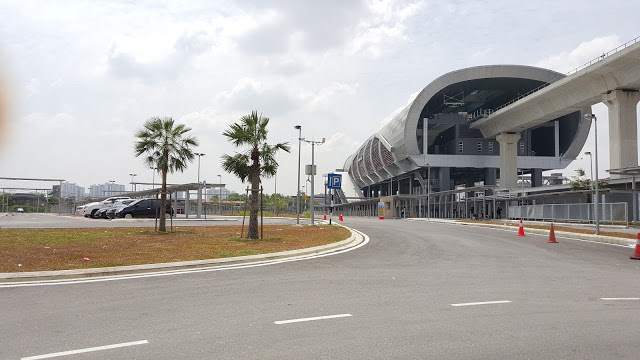
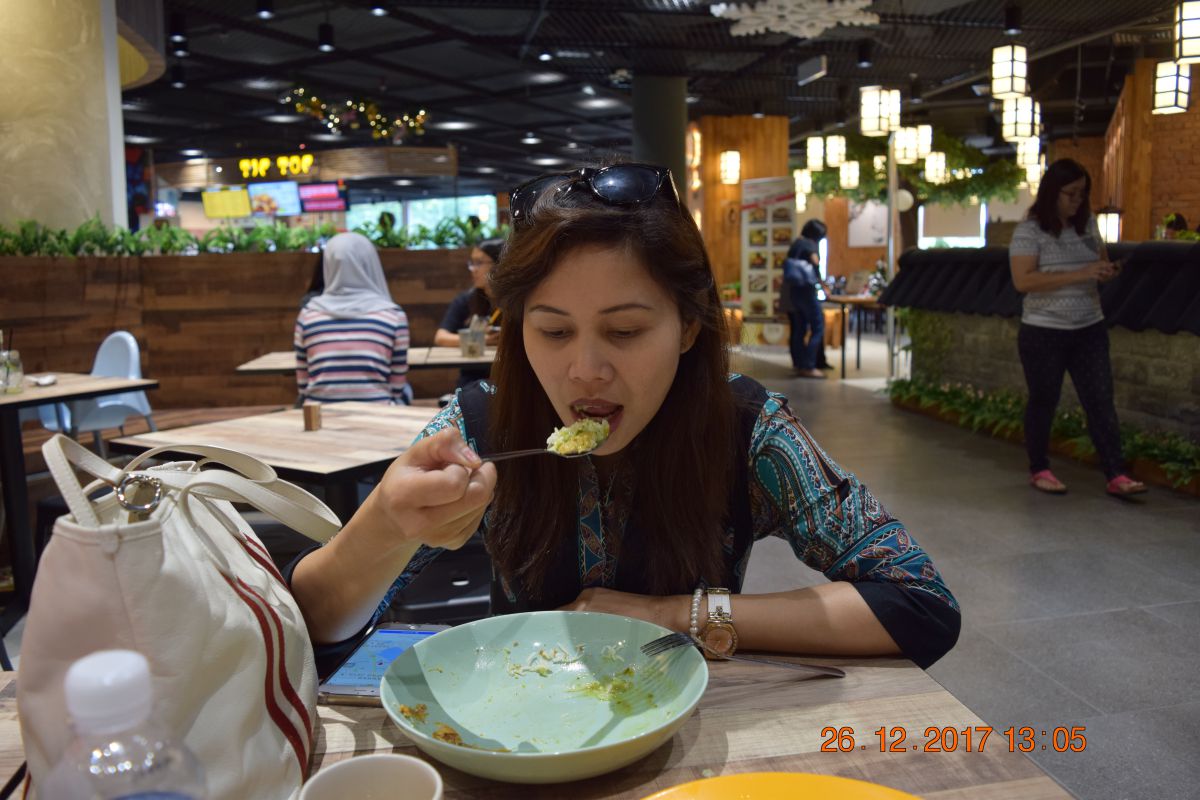

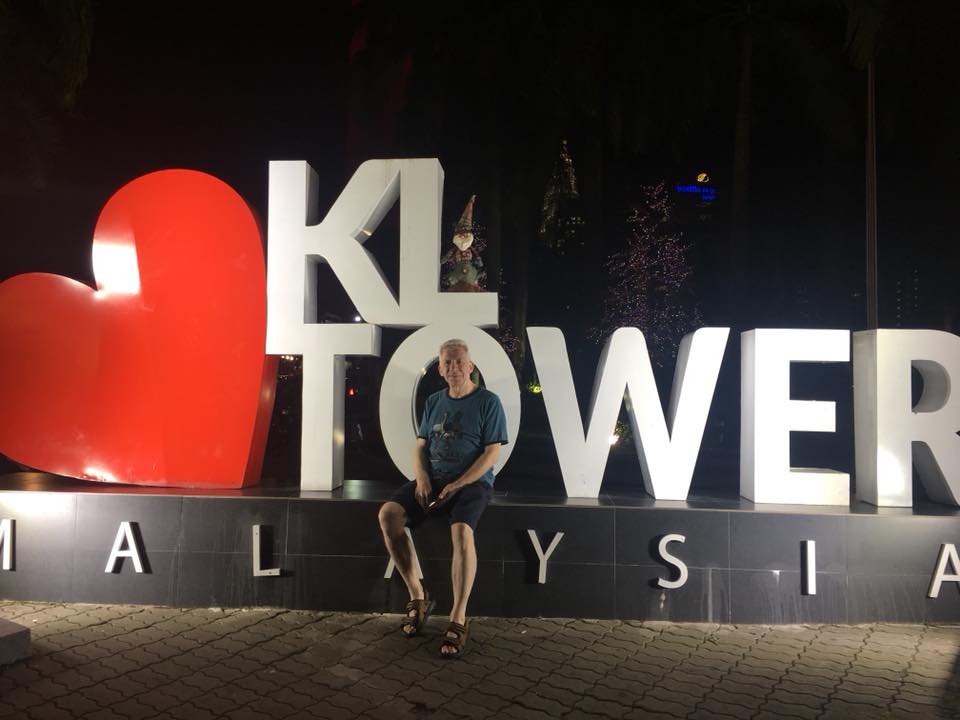
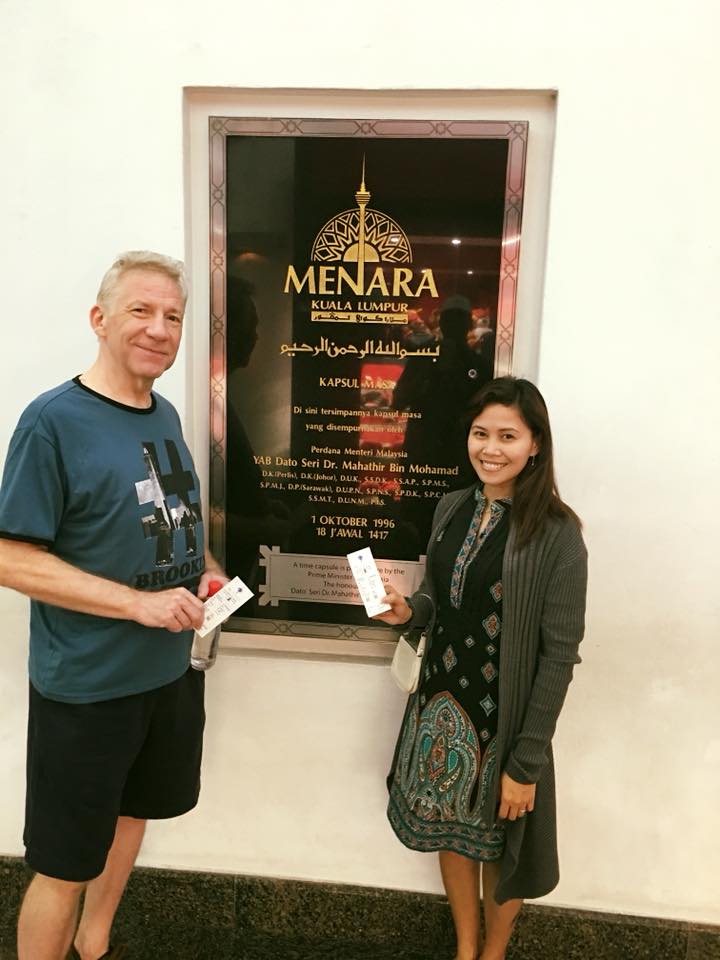 Got tickets to go up the viewing deck
Got tickets to go up the viewing deck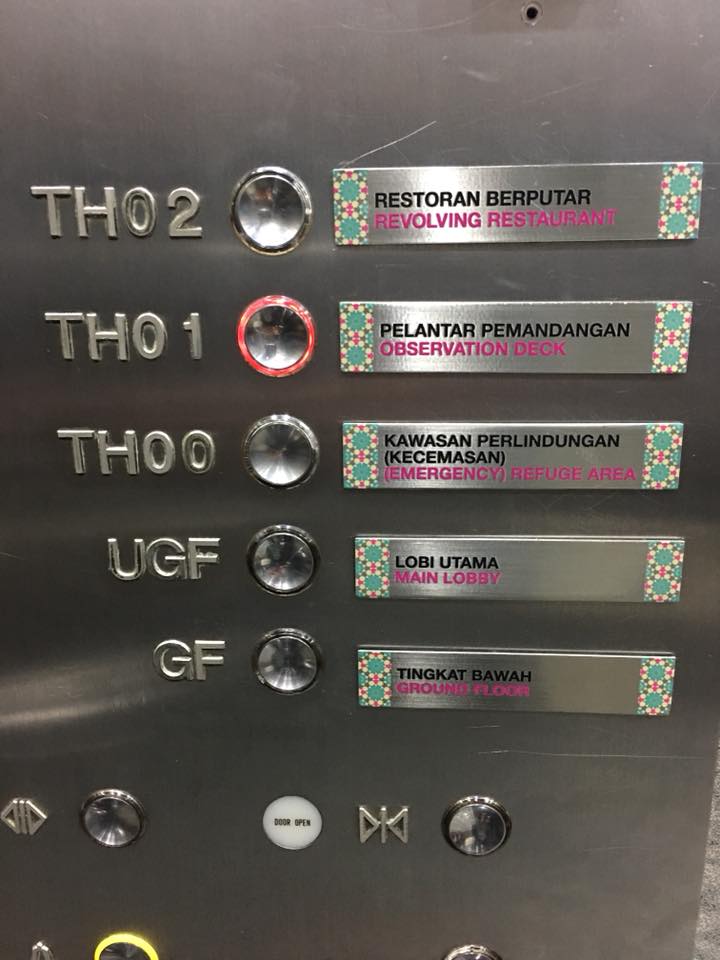 The elevator takes us to the Observation Deck
The elevator takes us to the Observation Deck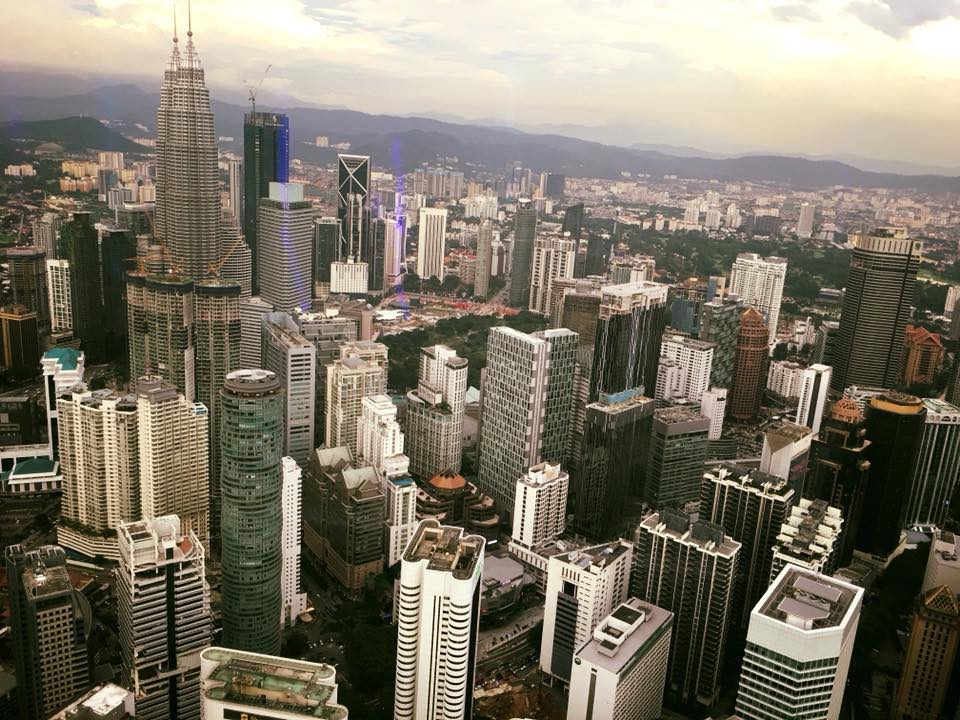 View from the observation deck
View from the observation deckStill hungry leaving the KL tower we had a light dinner at one of the many cafe/restaurants lining the Jalan P. Ramlee road. Healy Mac's is a nice place to have a relaxing dinner indoors or, in our case, outside watching KL nightlife come alive.
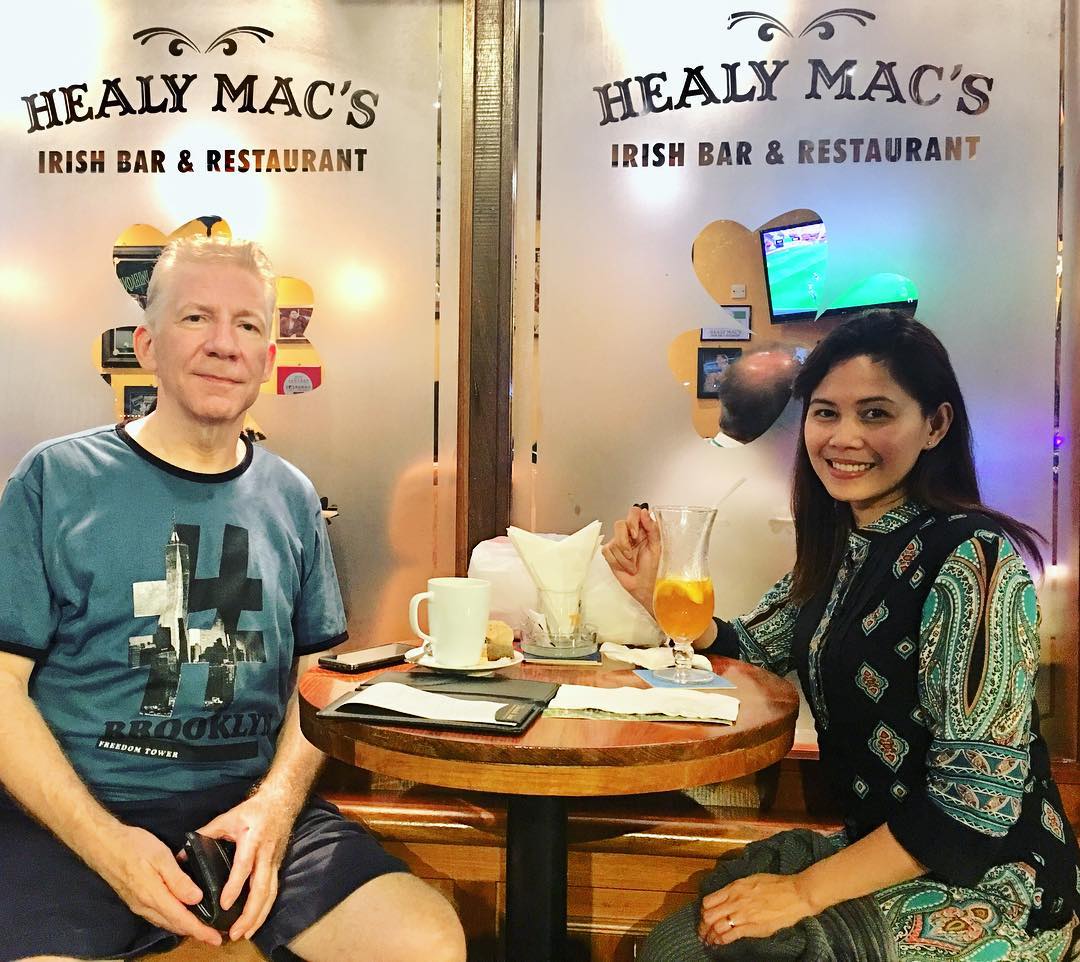 On the terras of Healy Macs. the street is lined with restaurants and bars.
On the terras of Healy Macs. the street is lined with restaurants and bars. 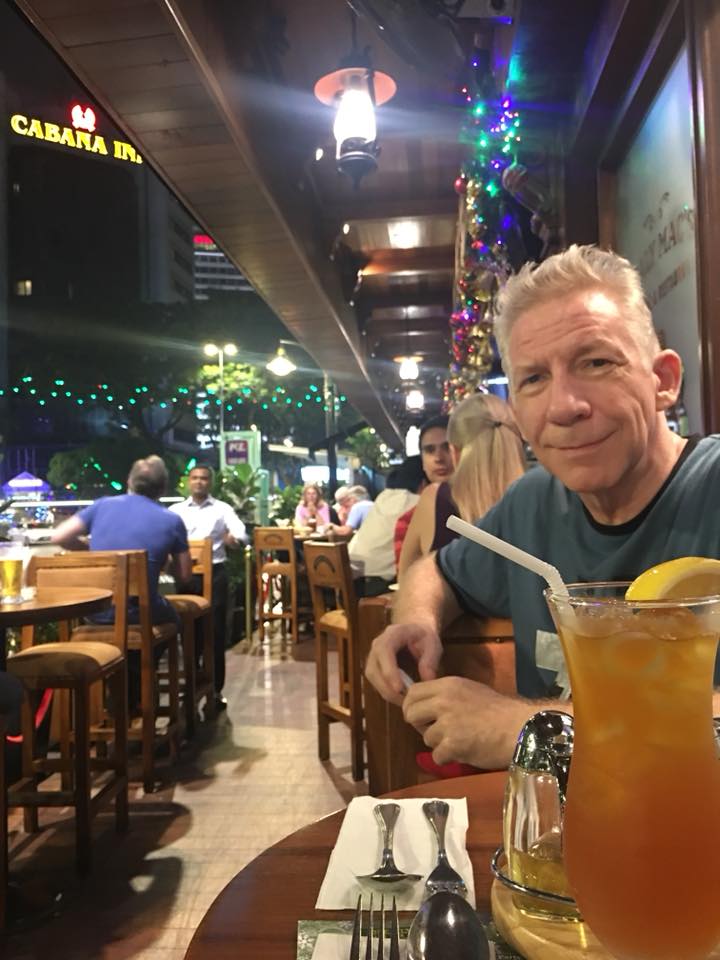
Next day we signed up for Batu Cave, a limestone hill that has a series of caves and cave temples in Gombak, near Kuala Lumpur. Another train ride from KL central station to KC05 Batu Caves Komuter station, costing RM 2.6 for a one-way journey.
Later in the evening walked to the Pavillion mall nearby the hotel to find a place for dinner. As in all malls in the city, also here an elaborate Holiday decor. We settled for the Vietnamese kitchen at La Lot (Du Viet)
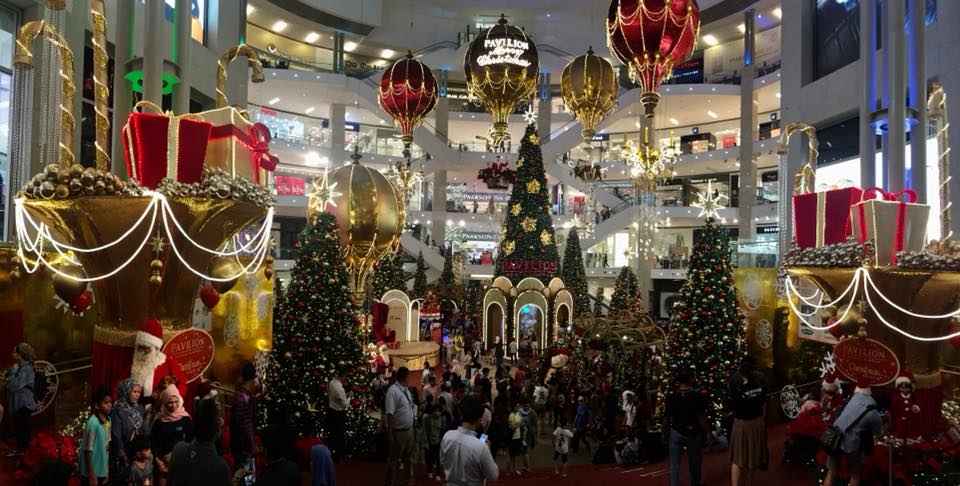 Pavillion Mall holiday decor
Pavillion Mall holiday decor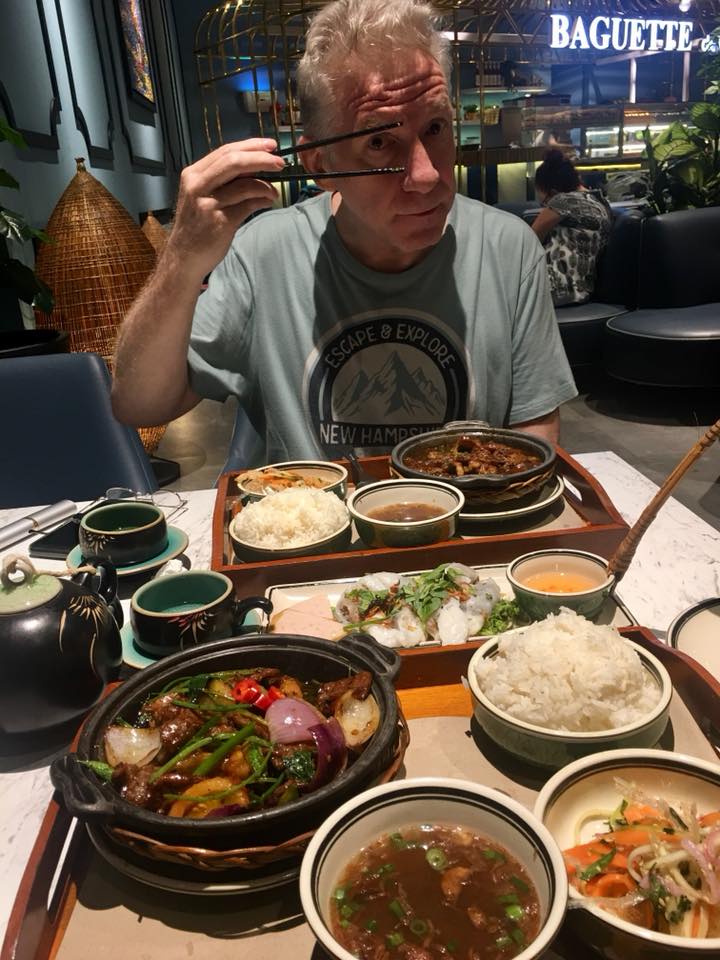
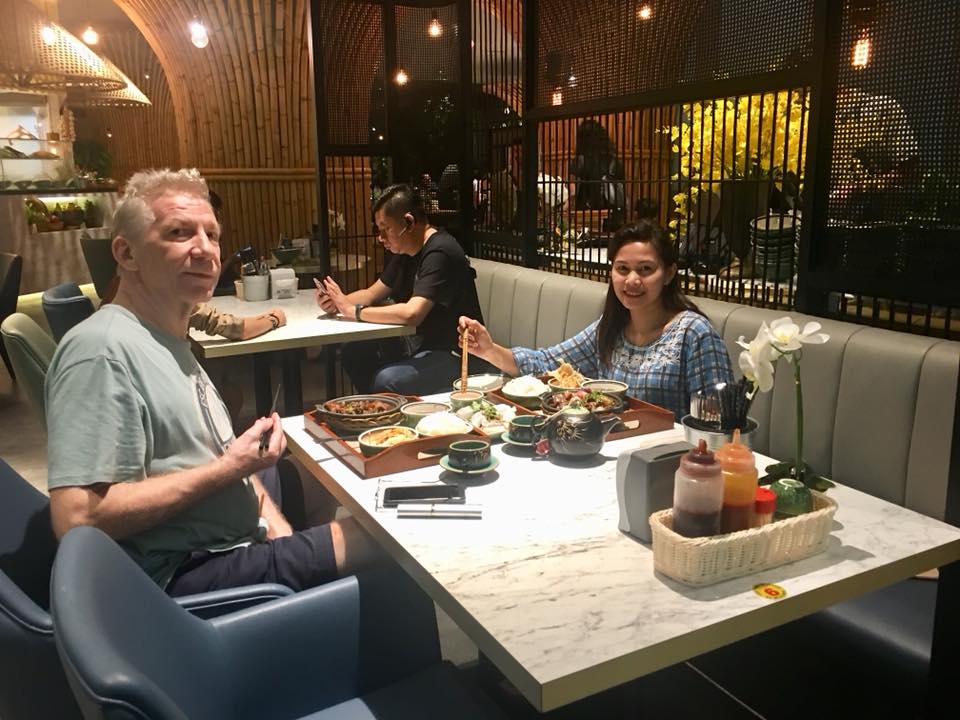 Vietnamese kitchen at La Lot
Vietnamese kitchen at La LotAnother day and Jas found another resort called Sunway lagoon. The compound has Mall, hotel, medical facilities, leisure and entertainment park. The weather was not on our side that day so not much else to go around.
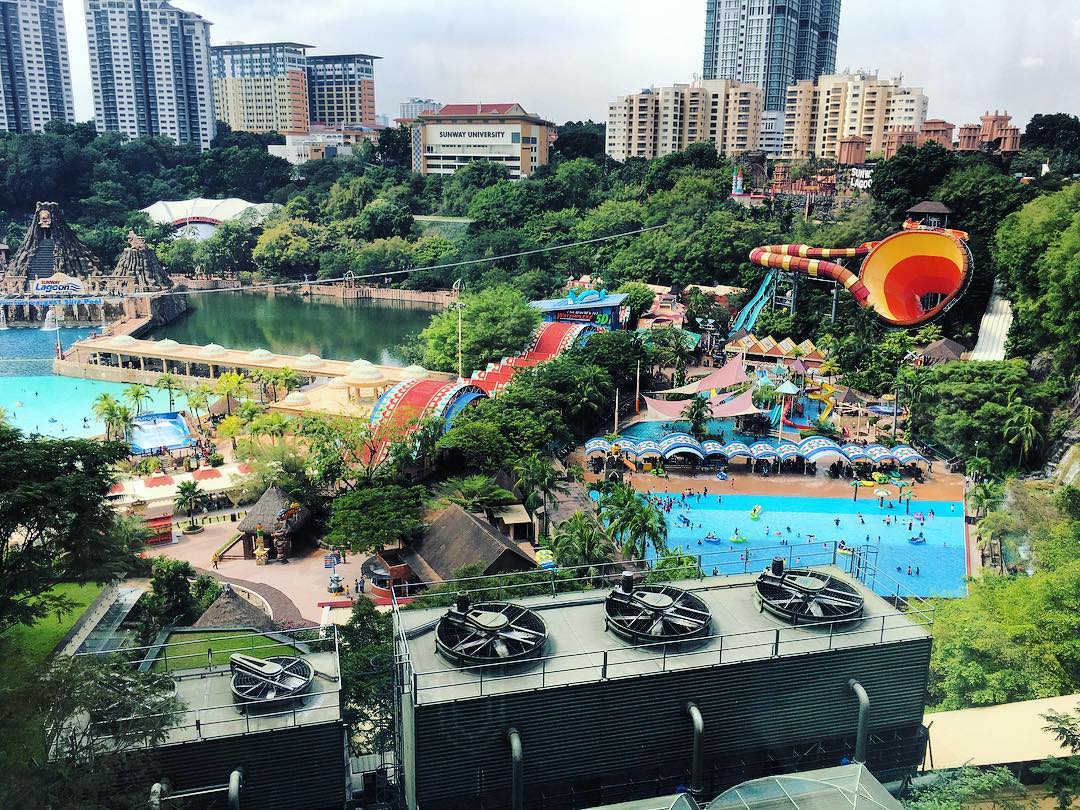 Sunway Lagoon Entertainment park
Sunway Lagoon Entertainment park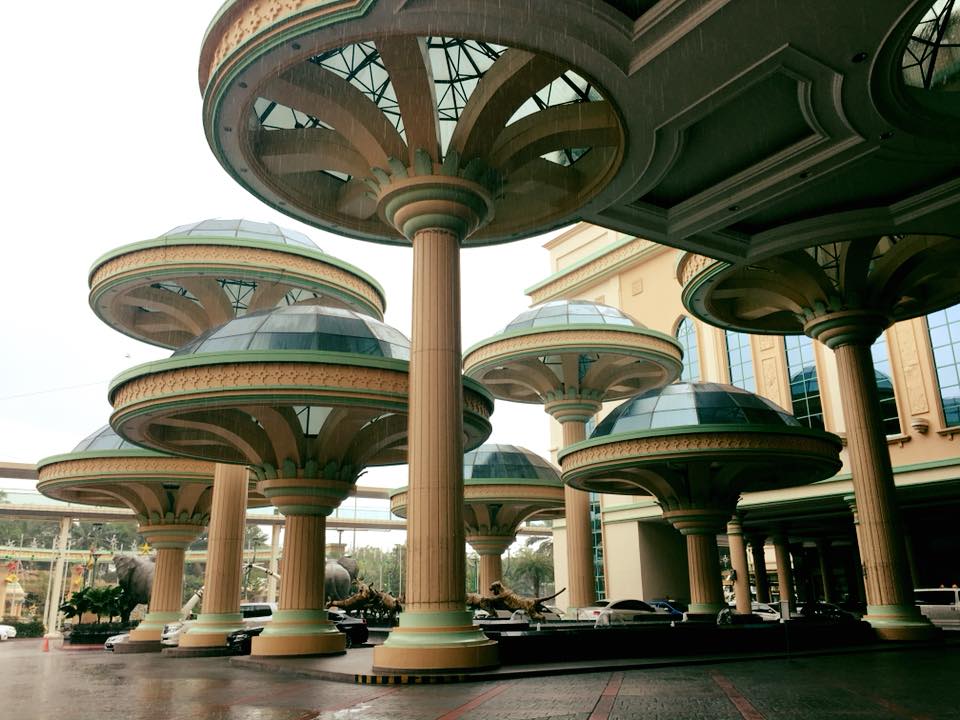 Sunway Hotel & Club Entrance
Sunway Hotel & Club Entrance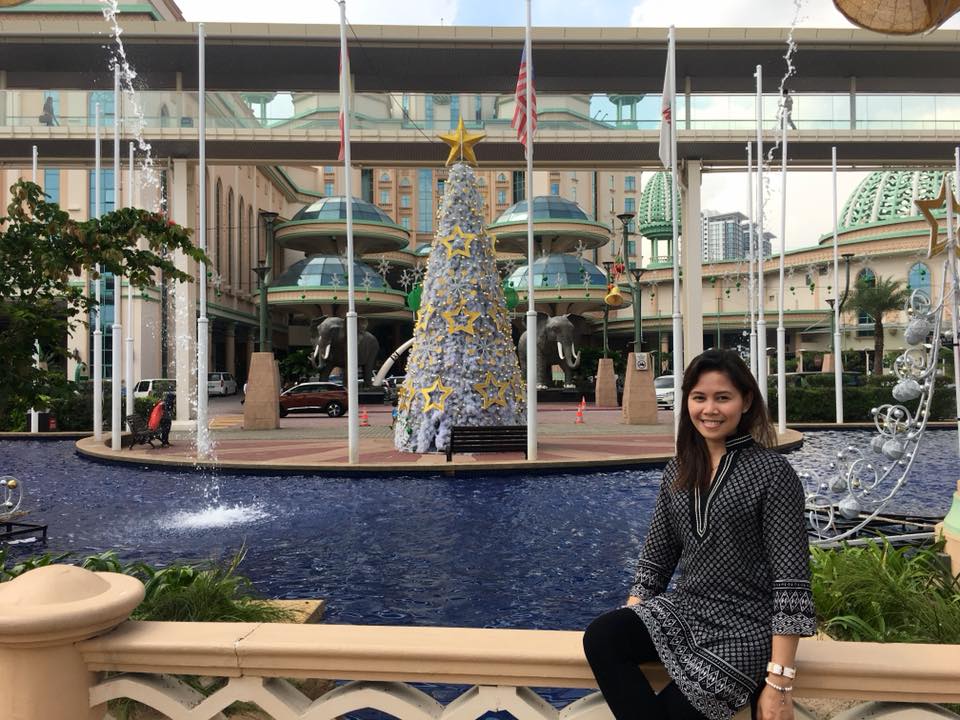 Park in front of the Sunway entrance
Park in front of the Sunway entranceLast day in Kuala Lumpur. After a late breakfast, packed up and checked out of the hotel. The flight is in the evening so we plan to move to the airport at 6PM. Still time to roam around. Left the luggage in the hotel storage. The hotel limo brought us to the airport and we arrived in Manila early morning in one piece.



































Comments powered by CComment